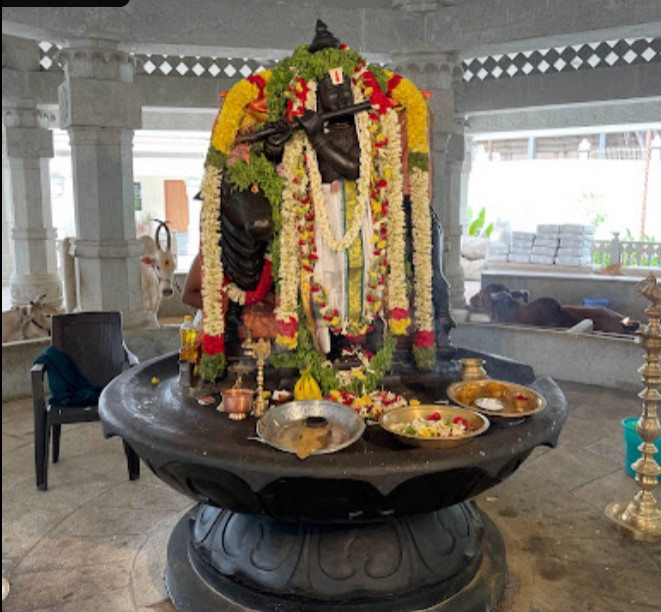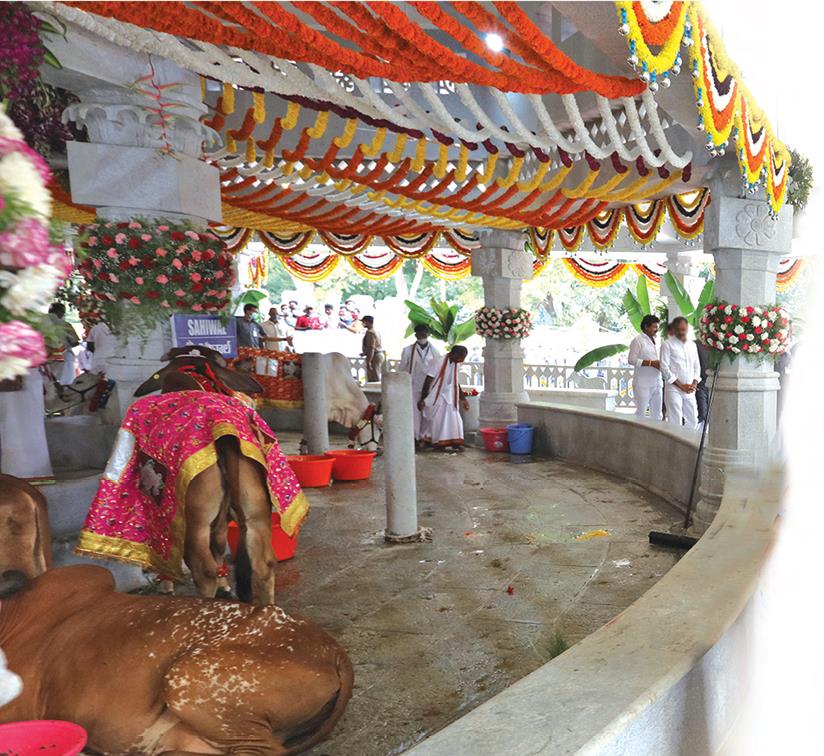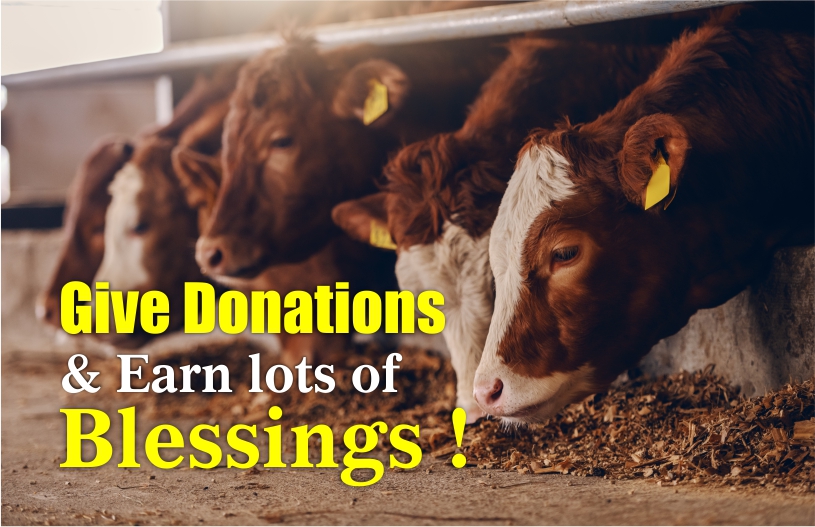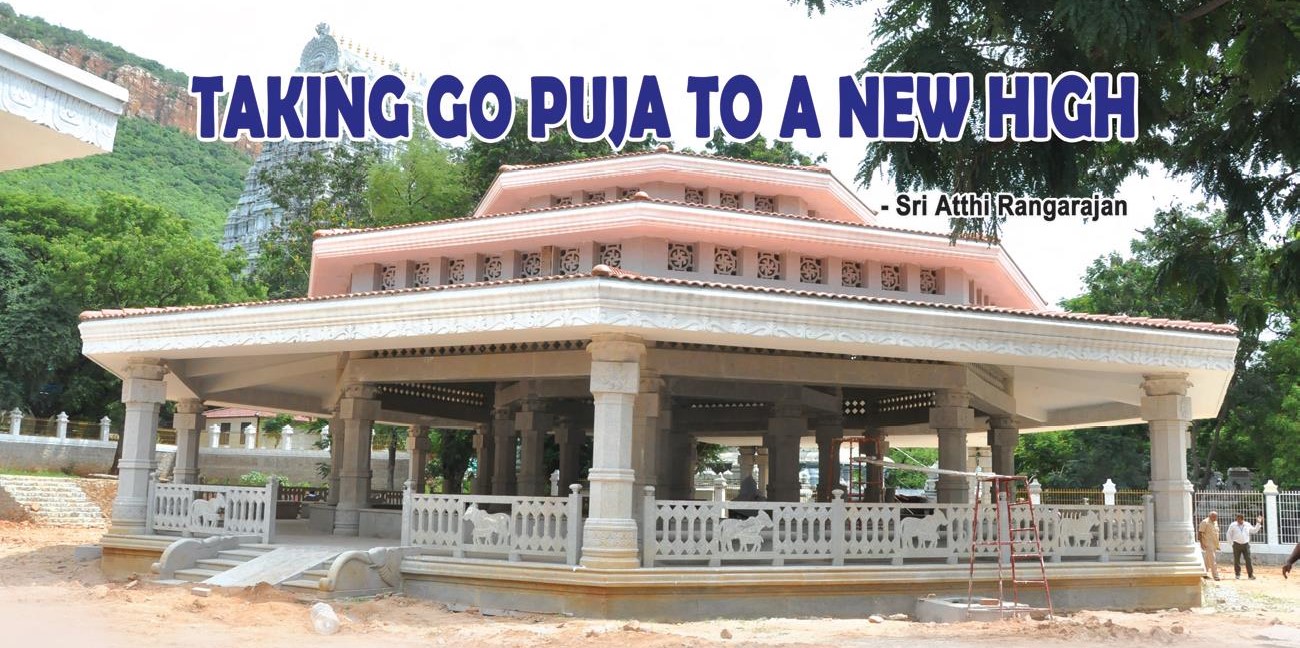Sri Venkateswara Saptha Go Pradakshina Mandiram
Cow worship is always considered a sacred activity for Hindus. It is revered as a symbol of prosperity as Goddess Maha Lakshmi is believed to live in the animal, thus bestowing health and wealth to Her devotees.
Since time immemorial, all the dynasties that were part of the Bharata Varsha patronized cattle worship and even promoted cow-based products not only to ensure the citizens’ health but also to distribute wealth among the masses.
A quick look at our hoary mythology and ancient history reveals that the prosperity of a kingdom used to be measured by its cattle wealth. The cow was hence considered not only as the sole breadwinner in many households but also as the living god of a village.
The Tirumala Tirupati Devasthanams (TTD) has been a champion in preserving, propagating, and promoting native cows (Go-Matha) at its Sri Venkateswara Gosamrakshanasala and mobilizing donations through its Sri Venkateswara Gosamrakshana Trust.
Though the TTD is a pioneer in cow protection and propagation activities, it has taken steps to make cow worship a regular part of its series of activities.
Alipiri, the foot of Tirumala hills, has a new landmark for cow worship, which is called ‘Sri Venkateswara Saptha Go Pradakshina Mandiram’. The idea behind the TTD coming up with the concept is to let the pilgrims do ‘Pradakshana’ to seven ‘Desi’ cows and calves.
The magical number ‘seven’ here is synonymous with the seven hills of Tirumala and is considered a good omen for people to start their holy trek to the hill shrine after praying to the cows arranged in a pattern.
There will be 25 to 30 at any point of time on the premises, from which seven cows will be made to stand at the altar at the center. Devotees walking in will perambulate around the cows as a form of worship. This act, done with a noble heart and with due sincerity, is believed to remove all sins committed in previous births.

Feed donations to be made in Go-Mandiram
| Grain/Cereals | Planetary positions |
| Wheat and jaggery | Suryagraha Shanti |
| Paddy | Chandragraha Shanti |
| Red gram and jaggery | Kujagraha Shanti |
| Black gram and jaggery | Rahugraha Shanti |
| Chickpea | Gurugraha Shanti |
| Sesame seeds | Sanigraha Shanti |
| Green gram | Budhagraha Shanti |
| Horse gram | Kethugraha Shanti |
| Cowpea | Sukragraha Shanti |
4 Acre Campus
The four-acre campus is strategically located close to the footpath and also the toll gate on the second ghat road leading to Tirumala hills. This facilitates both the trekking public as well as the motorists using the ghat road to make a stopover at Alipiri, pray to the cows, and then embark on their holy pilgrimage to the abode of Lord Venkateswara.
The complex also has a temple with the deity of Sri Venugopala Swamy, where Puja will be offered every day as prescribed in the religious doctrines. It may be recalled that Lord Sri Krishna, as a cowherd, always holds cow close to his heart and can be mostly seen in the company of cattle, which sway to the tune of the mellifluous music emanating from his flute.

Go-Thulabaram
Another major attraction here is a ‘Go Thulabaram’, which is similar to the one used by pilgrims to weigh products against their weight, to be donated as part of the fulfillment of their vow. The difference in this case is that the products donated to the temple are weighed against the weight of a cow.
A cow is made to stand on one side of the ‘Thulabaram’ and consumable products like rice, jaggery, haystack, nuts and cereals, sugarcane, groundnut husk, etc. are added in gunny bags on the other side, till both sides strike a balance. The philanthropist then donates the same to the TTD, which in turn uses it to feed the cattle not only at the ‘Go Mandiram’, but also at the various Goshalas under its management.
To hold the weight of a cow as well as the products, the ‘Thulabaram’ is specially ordered from a firm in Madhya Pradesh, which made it with cast iron with a heavy gauge. Apart from the temple and a cattle shed to house thirty cows, there is a vast grazing field, where the cattle will be let out.
Animals moving around and grazing in the pasture will naturally gain strength and immunity, compared to the ones that are fed manually. This is the idea behind developing a grazing field with fodder crops.
Go-Pradakshina Seva
Devotees can have Go-pradakshinam at this Go-Mandiram before offering prayers to Lord Venkateswara at Tirumala.
Go-Vignana Kendram
Also abutting the ‘Go Mandiram’ is a massive building ‘Go Vignana Kendram’ housing a meditation hall and a photo gallery depicting TTD’s cow-related activities. After praying to the cows, people intending to sustain the devotional fervor for a few more minutes can sit down for meditation and chant the holy names of the Lord.
There is also a children’s play area, where the kids will be allowed to roam around when the elders pray. It will also be an occasion for the children to engage in fruitful time with the cows and attain a spiritual and compassionate bent of mind. The building also has a gallery to display the TTD’s programs on cow protection, apart from the donation schemes available to the public.
This will not only help more benefactors join the cause of cow protection but also provide a window to let the TTD’s activities on this front spread far and wide. As the area is surrounded by forest, where the movement of carnivorous animals cannot be ruled out, the TTD management intends to provide electric fencing to ensure the safety of the cows. Deployment of guards with light arms is also under contemplation to scare away such wild animals from the vicinity.

Devotees can offer various grains of their choice to the cows and may donate the grains and cereals that suit the planetary positions and movement.
For example,
- wheat and jaggery are known to please the Sun God, which the devout can donate to Suryagraha Shanti.
- Similarly, paddy is suited for Chandragraha Shanti,
- red gram and jaggery for Kujagraha Shanti,
- black gram and jaggery for Rahugraha Shanti,
- chickpea for Gurugraha Shanti,
- Sesame seeds for Sanigraha Shanti,
- Green gram for Budhagraha Shanti,
- horse gram for Kethugraha Shanti and
- cowpea is donated for Sukragraha Shanti.
Devotees can donate the above grains according to the weights of the various cows mentioned at the ‘Go Thulabharam’, or pay the equivalent in cash drawn as a demand draft. T.T.D. took up the noble cause of popularizing the concept of cow worship and propagating the importance of ‘Go Matha’ in a great way.

